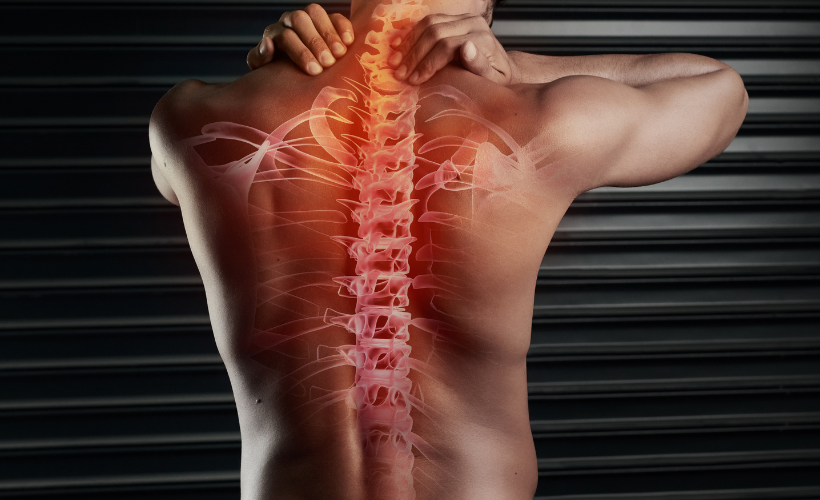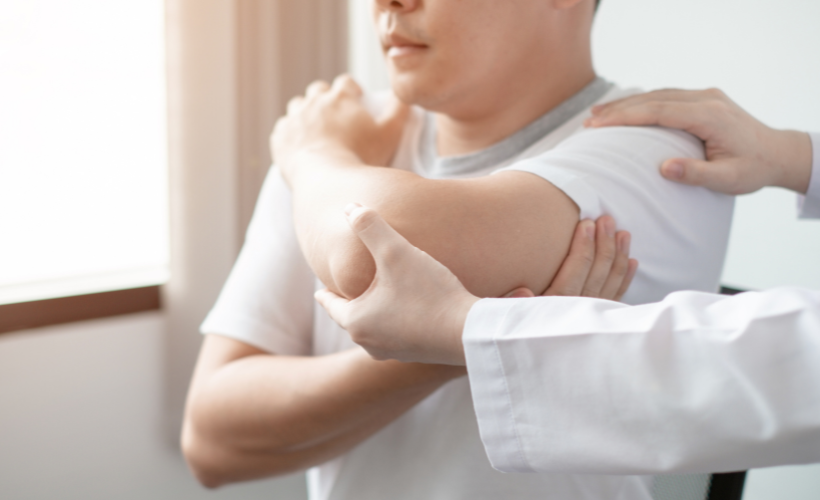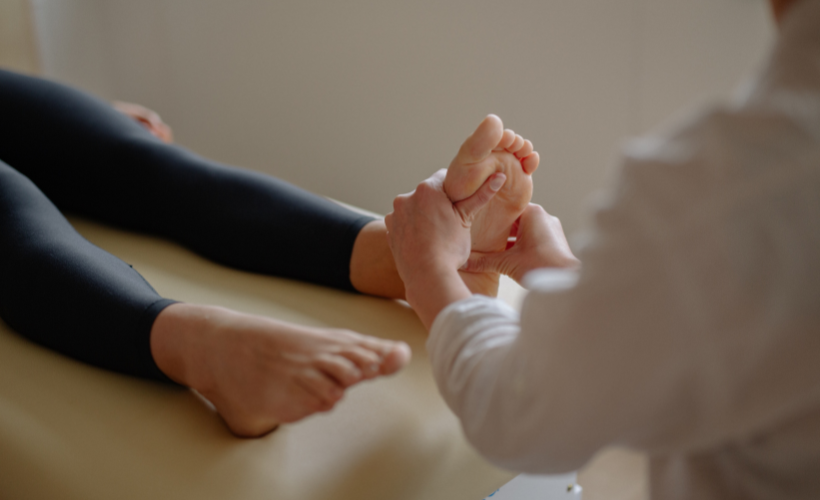Top Rated Orthopedic Physical Therapists in Cranford, NJ. CALL US: 908-325-6556
Top Rated Orthopedic Physical Therapists in Cranford, NJ
A Guide to Spinal Stenosis | Physical Therapy Can Help!

Spinal stenosis affects your vertebrae and results in too much pressure on the spine, adversely impacting the patient's quality of life. Between 250,000 and 500,000 Americans suffer from this degenerative condition each year. While there are a few treatment options to help alleviate the symptoms, early diagnosis is key to improving prognosis.
In this guide to spinal stenosis, we will go over what this degenerative condition is and how it can affect your spine. Keep reading until the end, as we will also cover diagnosis and treatment and how a physical therapist may provide comfort through personalized exercises and treatment plans.
Let's get started!
Understanding Spinal Stenosis
Spinal stenosis is a degenerative condition that occurs when there is a loss of joint fluid in the central spinal canal, lateral recesses, or lumbar spine. As the space inside the backbone becomes smaller, it can cause pressure on the spinal cord and nerves, resulting in pain and discomfort.
While your thoracic spine may suffer from spinal stenosis, it's pretty rare. This degenerative condition often affects the lower back (lumbar spinal stenosis) or neck (cervical spinal stenosis).
Spinal Stenosis Is Often Caused by Age-related Factors
Aging is one of the major causes of spinal stenosis. As a person ages, the ligaments in their backbone become thicker and harder.
Wear and tear over the years due to constant movement can also further aggravate this degenerative condition, resulting in smaller gaps in the spine.
Spinal stenosis can be acquired after birth, commonly affecting individuals who are over the age of 50. It can either occur due to degenerative changes or a work injury.
Some of the most common causes of acquired spinal stenosis include the following:
- Bone overgrowth
- Bulging or herniated discs
- Thickened ligaments
- Spinal fractures and injuries
- Spinal cysts or tumors
- Spinal injuries
- Spinal tumors
Besides acquired spinal stenosis, 9% of cases result from congenital factors, which may be present at birth. This degenerative condition can also affect children and infants due to several reasons, including the following:
- Spine formation issues during fetal development
- Genetic mutations that affect bone growth
- Achondroplasia
- Spinal dysraphism
- Congenital kyphosis
- Congenital short pedicles
- Osteopetrosis
- Morquio syndrome
- Hereditary multiple exostoses (diaphyseal aclasis)
Signs and Symptoms of Spinal Stenosis
Spinal stenosis can occur in any part of the spine. Depending on the location of this degenerative condition and its severity, patients may experience pain, numbness, tingling sensations, and weakness in their neck, back, and limbs.
Since symptoms can develop over time, spinal stenosis often goes unnoticed. This is why many people start complaining about back and neck pain after turning 50.
How to Diagnose Spinal Stenosis
To ensure a better quality of life, diagnosing spinal stenosis as early as possible is essential. A doctor may review your medical history and determine the location of pain by gently pressing on the spine. They'll ask you to bend a certain way to see whether a particular position brings on the symptoms.
Besides a physical examination, your healthcare provider may also request a couple of imaging tests, including X-rays, MRI, and a CT scan.
What Are Your Treatment Options?
There are several treatment options available to people with spinal stenosis to help them cope with their symptoms or slow the progression of this degenerative condition. However, before recommending any plans, the healthcare provider may conduct a thorough evaluation of the patient's health.
Some of the most common treatment options for spinal stenosis include the following:
Oral Medications
To relieve inflammation and alleviate pain associated with spinal stenosis, patients may take nonsteroidal anti-inflammatory medications (NSAIDs).
However, it's important to discuss long-term use of over-the-counter medicines with your healthcare provider before taking them.
In some cases, doctors may prescribe muscle relaxants or antiseizure medication like gabapentin to reduce pain and discomfort.
Physical Therapy
Strengthening exercises can help build muscles, providing the spine with much-needed support. This can alleviate pain and discomfort associated with spinal stenosis, bringing flexibility and balance to the body. You can reach out to our professional team here.
Applying Heat or Cold Packs
Heat packs are great for increasing blood flow and reducing pressure on the spine. While it's known to relieve the aches in your joints, some patients may be better off using cold packs to manage inflammation and swelling. Experiment with both to see which one works best for you.
Steroid Injections
When the pain is too severe, your healthcare provider may recommend and administer corticosteroid injections. These reduce inflammation that's causing pressure on the spinal nerves, helping alleviate discomfort and irritation in the affected area.
Surgery
When all other treatment options have been exhausted, surgery becomes the final resort. Fortunately, most patients do not need to go under the knife.
However, for those who require surgery, there are a few surgical options aimed at alleviating the symptoms of spinal stenosis. These include laminotomy, foraminotomy, and spinal fusion, among others.
Is Spinal Stenosis Usually Preventable?
By the age of 50, most people have some form of osteoarthritis, which means that spinal stenosis is not preventable. However, you can take some steps to lower its risk or reduce the pressure on your spinal nerves during walking.
Here are a few tips that you should follow to keep your spine healthy:
- Maintain good posture when sitting, sleeping, or lifting heavy objects.
- Extra weight can put pressure on your spine, so make sure to eat healthily and monitor your weight closely.
- Quit smoking, as it increases the risk of disc degeneration.
- Depending on the condition (central stenosis or lateral stenosis), different types of aerobic exercises can support your back and make your joints and muscles more flexible. A physical therapist can help relieve pressure on the nerves with gentle techniques.
Physical Therapy Can Help You with Spinal Stenosis!
According to the American Physical Therapy Association, gaining muscle strength with the help of a physical therapist (PT) is a great way to improve your balance, flexibility, and spine stability.
While your healthcare provider may prescribe medication to assist with pain management, it may also recommend you to a PT.
Physical therapists work closely with patients, guiding them through a combination of exercises and activities that target the back and abdominal muscles to make the spine more resilient.
By learning the right type of exercise, you'll be able to stretch your backbone, reducing pressure on the spinal canal and alleviating back pain.
How Can a ProTouch Physical Therapist Help with Your Spinal Stenosis?
At ProTouch, our physical therapists have the skills, knowledge, and expertise to provide healing touches and reduce the pressure on your spinal nerves. We will start by assessing the severity of your spinal stenosis before creating a personalized physical therapy plan to help you cope with this degenerative condition.
Sometimes, a particular exercise may work well for people with lower back pain, but it may not be effective for patients suffering from spinal stenosis.
For example, individuals who find walking painful might be able to strengthen their muscles through cycling. This highlights the importance of working with an experienced PT.
Our physical therapist will design a specialized fitness program specifically catered to your needs. We will determine the impact of spinal stenosis on your muscles before guiding you on manual therapy and using it to improve mobility in your joints and spine.
Seek Comfort with an Experienced ProTouch PT Today!
Spinal stenosis is a narrowing within the backbone that reduces the gaps in the vertebrae, causing too much pressure on the spinal cord and the nerves. The tingling pain and discomfort can make your life miserable.
At ProTouch, our physical therapist will conduct a thorough test before working closely with you to incorporate the right exercises into your daily activities.
Are you looking for an experienced PT for spinal stenosis management? Fortunately, you don't have to search for hours to find physical therapists in New Jersey. Simply call us at (908) 325-6556 to book a consultation today!


(908) 325-6556
contact@protouchpt.com
570 S Ave E Building G, Suite C
Cranford, NJ 07016

